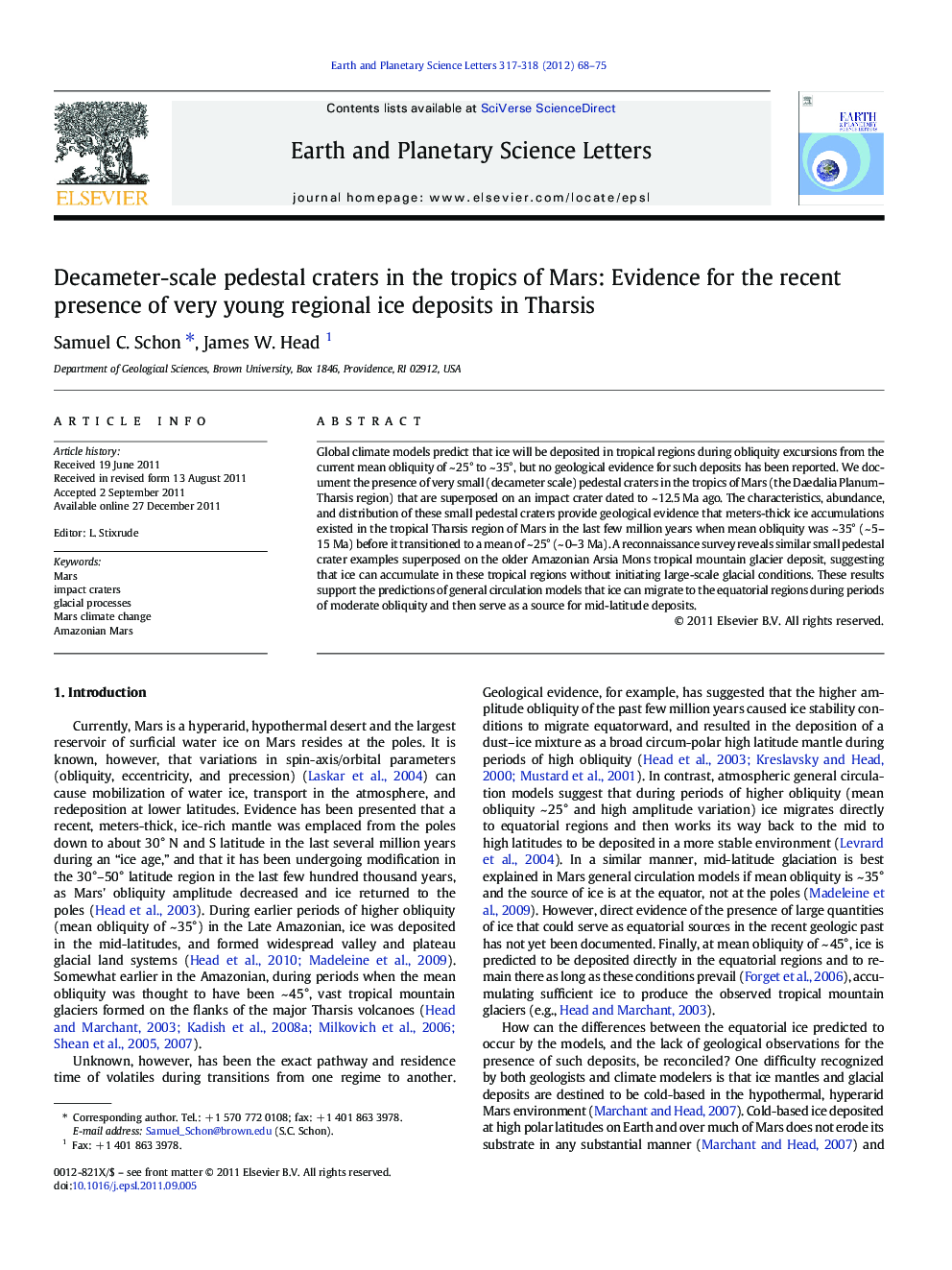| Article ID | Journal | Published Year | Pages | File Type |
|---|---|---|---|---|
| 4677624 | Earth and Planetary Science Letters | 2012 | 8 Pages |
Global climate models predict that ice will be deposited in tropical regions during obliquity excursions from the current mean obliquity of ~ 25° to ~ 35°, but no geological evidence for such deposits has been reported. We document the presence of very small (decameter scale) pedestal craters in the tropics of Mars (the Daedalia Planum–Tharsis region) that are superposed on an impact crater dated to ~ 12.5 Ma ago. The characteristics, abundance, and distribution of these small pedestal craters provide geological evidence that meters-thick ice accumulations existed in the tropical Tharsis region of Mars in the last few million years when mean obliquity was ~ 35° (~ 5–15 Ma) before it transitioned to a mean of ~ 25° (~ 0–3 Ma). A reconnaissance survey reveals similar small pedestal crater examples superposed on the older Amazonian Arsia Mons tropical mountain glacier deposit, suggesting that ice can accumulate in these tropical regions without initiating large-scale glacial conditions. These results support the predictions of general circulation models that ice can migrate to the equatorial regions during periods of moderate obliquity and then serve as a source for mid-latitude deposits.
Graphical abstractFigure optionsDownload full-size imageDownload high-quality image (306 K)Download as PowerPoint slideHighlights► Observations of decameter-scale pedestal craters. ► Evidence of recent equatorial ice on Mars. ► Geological support for predictions of GCMs. ► Equatorial volatile transport pathway for mid-latitude glaciations.
